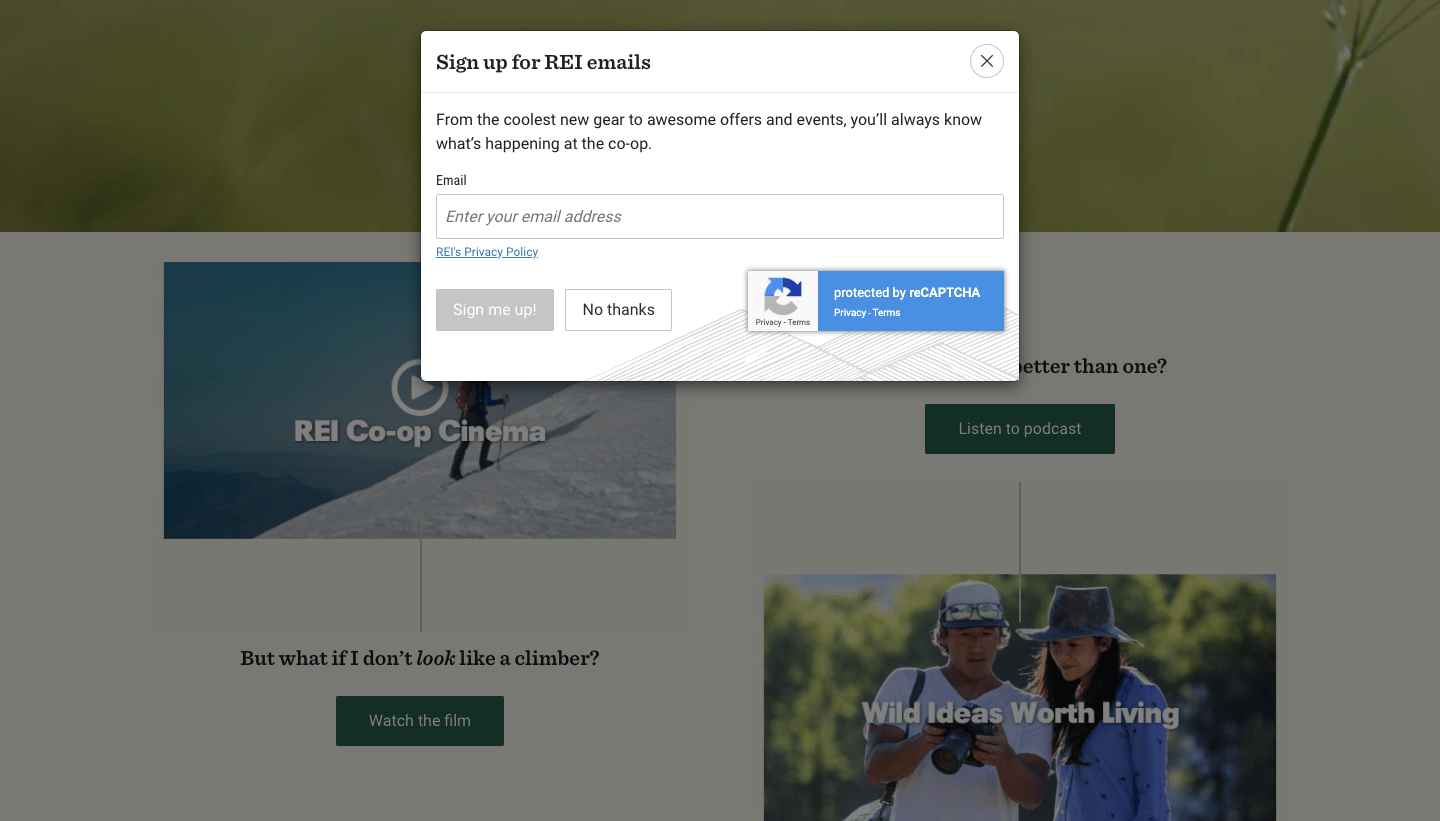Ecommerce makes it possible for people to open the doors of their very own virtual stores. Selling online makes it easier for small, specialized stores and big brand outlets to reach a wide audience. And, just like traditional businesses, ecommerce has its advantages and disadvantages. Let’s take a look at the realities of running an online store.
The advantages of ecommerce
A solid understanding of what’s in store (har har) when it comes to ecommerce will help you be prepared. Let’s start with the advantages of managing an online store.
Advantage #1: Ecommerce overhead is low
The cost of rent, utilities, and employees makes retail space expensive. Lower operation costs make it possible for many ecommerce sellers to beat out brick-and-mortar prices.
Online retailers need less space — they can run an ecommerce site out of a garage and use dropshipping to avoid a warehouse full of inventory. As an online store grows, so will the need for employees, but the stakes are lower and adjusting is easier when you’re not tied to a commercial lease.
Advantage #2: Online stores are always open

An online shop never closes. Whether it's a holiday, a blizzard, or some other event keeping people home, they can place an order around the clock, from anywhere. For those who work non-traditional hours and would rather stay home, shopping online is a convenient alternative.
Advantage #3: Ecommerce customers aren’t limited by geography

Whether it’s someone from the next town, the next state, or even across the ocean, an online store has the potential to reach customers worldwide. This is especially important for specialized businesses who may not have a big, local audience, but have eager customers scattered across the globe.
The proliferation of mobile devices gives people the power to purchase on the go — right in the palm of their hand. There’s never been a time when the impulse to buy has been easier to indulge.
Advantage #4: Promoting featured products on ecommerce is easy
Making changes to a website is far more simple than rearranging a physical space.
Take Zappos for example. In the screenshot below, there's a summer promotion for women’s sandals followed by a block of popular categories. Depending on the season or new items they want to feature, Zappos can change the design of their landing page without much effort.
A customer’s path is harder to control in a physical space than it is online. Promotions and specials can be front and center when customers hit your landing page.

Advantage #5: Ecommerce allows for a customized user experience
Data about a customer’s past purchases and online activity offer insight into their interests which can be used to deliver a personalized experience. Sharing products targeted to a shopper’s tastes is a way to appeal to customers with a deeper level of familiarity.

Amazon’s horizontal scroll features more items to explore showing related products — in this case a nice selection of music-related products since it’s attached to the account of a music nerd (yours truly). Their use of customer data to create a custom shopping experience is one of many facets of Amazon’s success.
Advantage #6: Purchasing is instantaneous

The site for high-end fashion retailer Tabitha Simmons is full of stunning product shots, helpful descriptions, and easy navigation, making the path to checkout seamless.
Shopping offline requires walking around, finding what you’re looking for, making your way to the checkout, and standing in line — most of which you can skip online. Ecommerce was made for optimal convenience.
Advantage #7: Retargeting and remarketing can further sales
Retargeting uses cookies from previous visits to display ads. Even if someone doesn’t make a purchase, retargeting is a marketing tactic that can gain business by keeping your brand in front of potential customers. You’ll see retargeting ads on websites unrelated to the page you’ve visited.
Take this ad on the Onion from the music retailer Sweetwater, for example. Because of my previous interactions on their site, a very specific ad for electronic music instruments popped up. Inviting people back to your site with retargeting ads brings them that much closer to making a purchase.

Remarketing uses the information from someone’s past purchases and site interactions to send emails about sales and promotions for related products. Remarketing is a more laser-focused marketing tactic that requires a customer’s email address.
Zappos uses remarketing to their advantage, emailing ads like the one below. I’ve bought skate shoes from Zappos before, and this email promoting Vans certainly speaks to me as part of this target demographic.

Advantage #8: Ecommerce is a great way to gather customer information
How many of us automatically say, “no” when a cashier asks for our email address at checkout? And how many of us automatically enter this same personal information and more online? I know I’m guilty.
Newsletter signups and other forms that gather information are key to building a contact list — and they’re way more efficient than a clipboard and pen on a countertop or having employees ask.
REI uses a simple, unobtrusive email signup to send in-store news and promotions. Ecommerce simplifies staying in touch with your audience.

Advantage #9: Ecommerce tracks a customer’s journey
Data from resources like Google Adwords and site analytics can tell you how someone found you. Unlike traditional advertising where ROI can sometimes be murky, data gleaned from analytics gives you insight into where people came from and what they’re looking for.
In addition to online advertising, SEO can help people find you through organic searches.
Advantage #10: It’s easy to scale up or down
Expanding or decreasing your ecommerce business is easy, especially if you use dropshipping to eliminate the need for a lot of space. Adding items or narrowing your store down to the top sellers is a simple process. Expanding or downsizing is more complicated when you have retail space.
Advantage #11: Ecommerce sites can handle high-volume orders
If your business has a sudden surge of action because of something like a shoutout on social media, most hosting is set up to handle an increase in traffic. Retail spaces can get overwhelmed scramble to deal with a sudden spike in business.
Advantage #12: Ecommerce attracts customers through content
Clear, useful content will help you reach potential customers. Tutorials and product demos, blogs, and other digital media give value to your audience and position your brand as an authority in your industry. When people see that you know what you’re talking about, they’ll trust your product descriptions and feel confident purchasing from you.
Sweetwater’s blog gives practical information about all things music and recording, and promotes the products they carry.




















The missing guide to the freelance designer's life is here
Learn everything you need to know about making the leap to freelancing, from how to find clients to how to price your services.
The disadvantages of ecommerce
Without the lows, we wouldn’t know the highs were high. The secret is knowing that challenges are a normal part of the process — expect and plan for them.
Disadvantage #1: The internet can break

The sky is blue, servers crash, and websites go down. When people’s need for instant gratification are derailed, it can be hard to win them back. A broken site sends the message that you’re not reliable.
Not only can the architecture that holds a site together fail, but there’s also the looming presence of identity theft. Sharing your credit card number, even on a trustworthy-looking site, is still scary for a lot of people.
Disadvantage# 2: It takes effort to accurately portray your products

Chewy has plenty of photos full of color and detail that show off their pet-related toys and products. Using multiple photos from different angles fills in many of the blanks created by an online experience.
One of the advantages of retail is that people can interact with your products, inspect workmanship, and see how something fits. An online store relies on photos to capture a product’s details. Poor-quality mages can skew color and misrepresent a product. Product returns are what happen when what shows up in someone’s mailbox doesn’t match what they saw online. And an unhappy customer, as we all know, has plenty of time to bash your brand on social media.
Disadvantage#3: There’s a lot of competition online

We can't talk about the competition without talking about Amazon. Their scope and bottomless pockets make them difficult to outdo. Amazon isn't the only corporation making business tough for smaller retailers — there’s plenty of competition in almost every niche.
There are businesses whose ad budgets snatch up the high-profile keywords on Google Adwords and push the price for clicks to ridiculous heights. There are retailers who can offer better or free shipping. And there’s always the battle for who has the lowest prices.
Setting yourself apart from the competition means finding different marketing perspectives and building a strong brand identity. With so many vying for the same target audience, you need to make sure you're not overlooked in a sea of sameness.
Disadvantage #4: Customers expect instant service
In this age of digital media, our brains are conditioned for immediate gratification. If an Instagram post sits unliked for more than a minute, a text or email goes unanswered for more than an hour, or a video doesn't load immediately, our patience runs thin.
This expectation for immediate feedback extends to every facet of our online interactions. Our expectations as consumers are unrealistic, and when they aren't met, it's all too easy to voice one’s discontent online.
Disadvantage #5: Shipping can be unpredictable

Lost or stolen packages, broken merchandise, and slow delivery makes shipping products challenging. No matter how well or how quickly products are packaged, there’s no guarantee they’ll reach their destination in tip-top shape or on time.
Disadvantage #6: There’s unlimited time to comparison shop
If you see a must-have item in the mall, you're likely to buy it on the spot. Ecommerce gives people the freedom to take their time. This unrestrained shopping experience leaves a huge window to comparison shop — frugal online shoppers will have no problem finding the best deals.
This leaves online retailers are in a constant state of competitive pricing, sometimes scraping by with the tiniest profit margins for the pleasure of repeat business.
Disadvantage #7: Retails spaces aren’t going away
According to Forbes, ecommerce sales represent slightly less than 10% of total retail sales. Despite everything we hear about the demise of shopping malls, there are many brands who maintain a strong retail presence.
It’s true that some big companies have suffered profound losses. The fall of brand giants like J.C. Penney, Sears, and Toys R’ Us has certainly rattled the industry. But this is more of a shift than the death knell of retail. For every big-box store that struggles, there are many small, more specialized businesses popping up and thriving. Companies like Casper, Bonobos, and Warby Parker — who started out as digital disruptors — are bringing this same rebellious ethos to retail.
Ecommerce over traditional retail
Ecommerce and the retail shopping experience aren't at odds. Many brick-and-mortar shops have a digital outlet to compliment their businesses and lots of digital-first brands have stepped into the physical sphere of retail.
Both platforms have their advantages and disadvantages, and both rely on a smooth customer experience. Every business needs marketing strategies to set themselves apart from the competition and position them as reputable brands. The two can coexist and reach customers who are ready and excited to spend money.
































